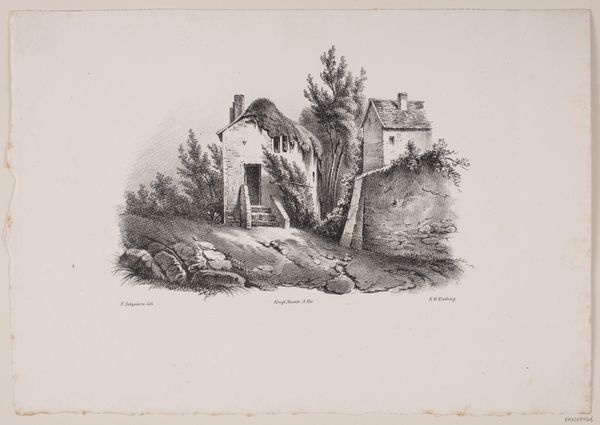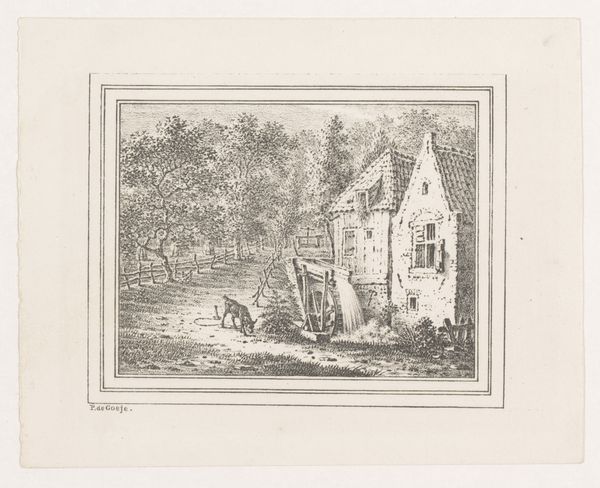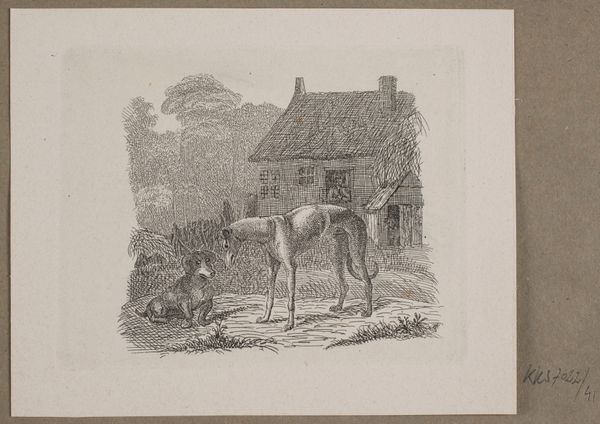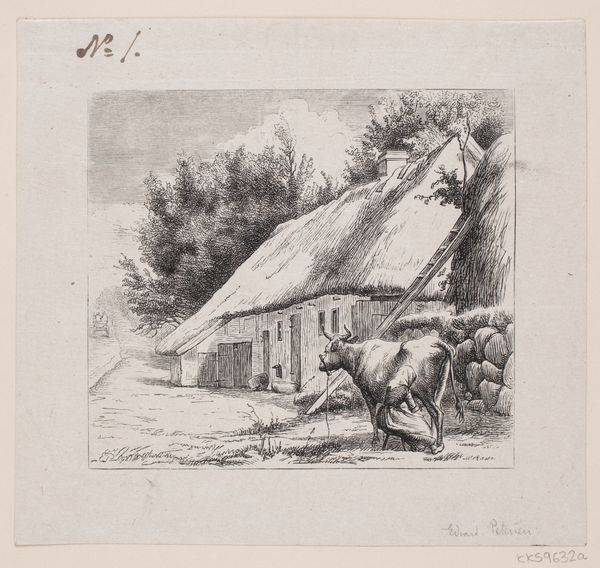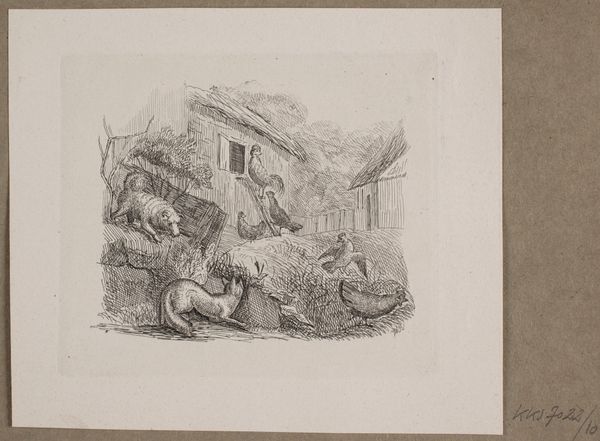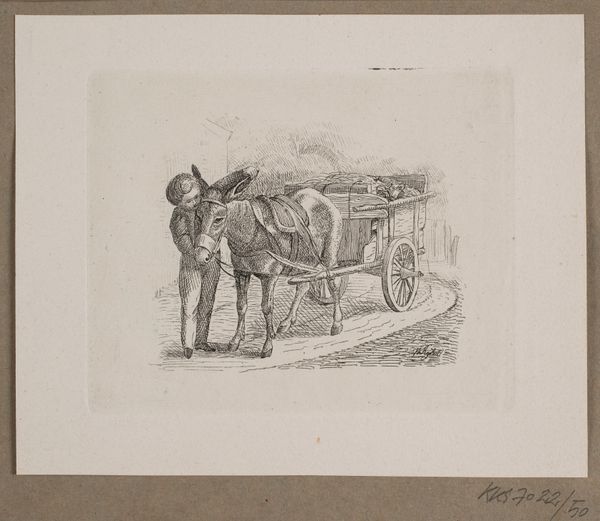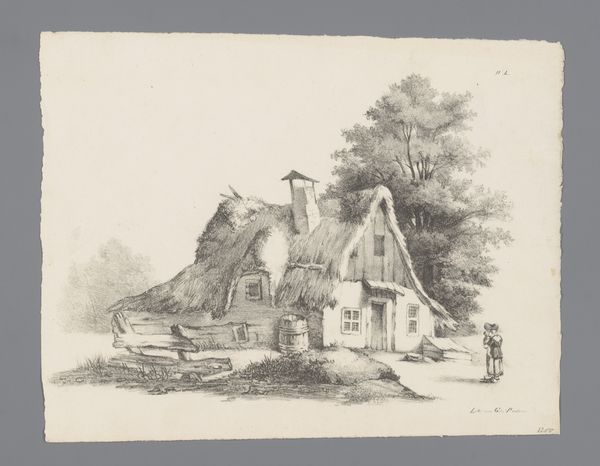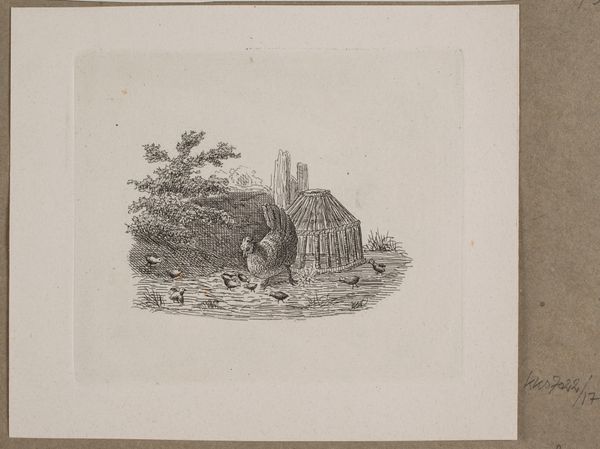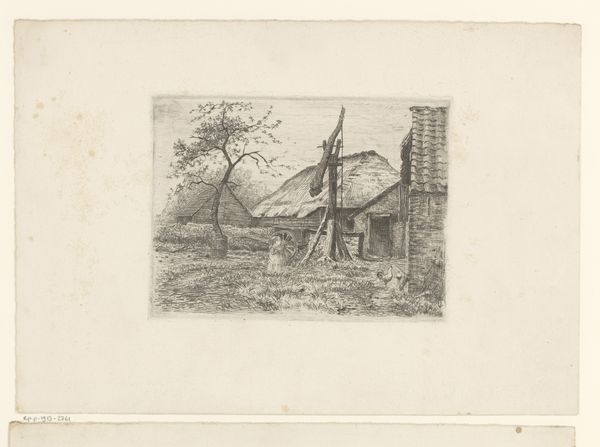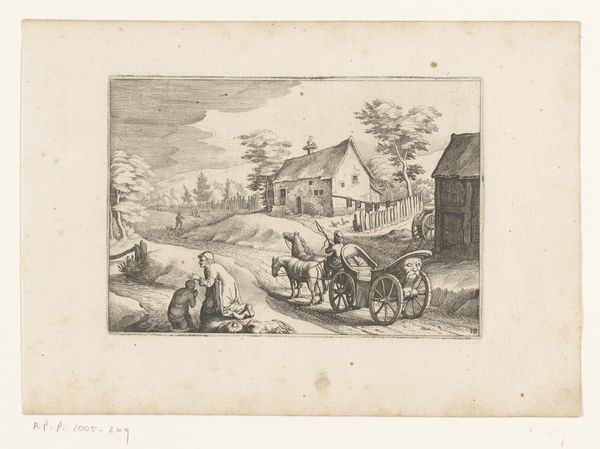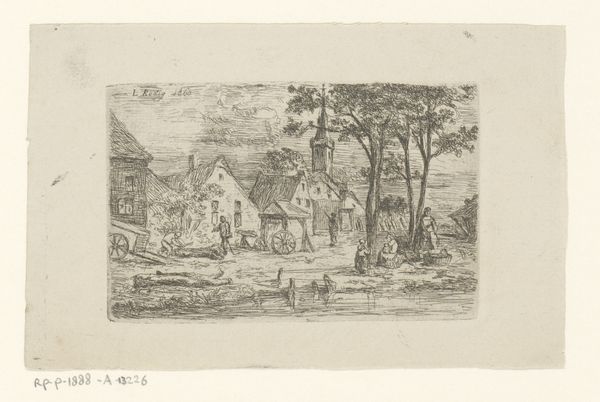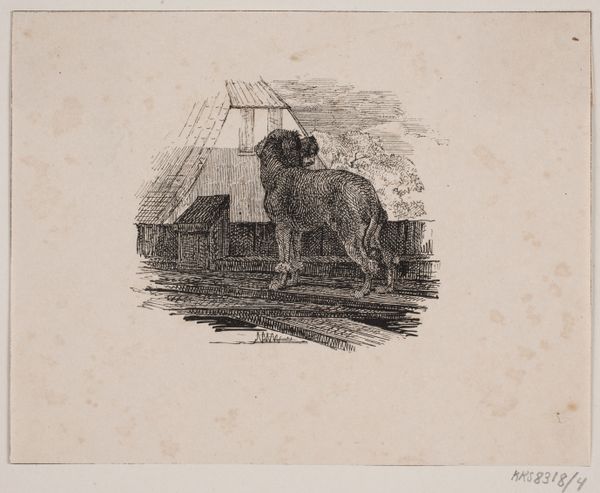
drawing, print, engraving
#
drawing
# print
#
landscape
#
romanticism
#
line
#
genre-painting
#
engraving
Dimensions: 88 mm (height) x 110 mm (width) (plademaal)
Editor: Here we have Vilhelm Kyhn’s "Illustration til O. Specter, \"Fabler for Børn\"" from 1838. It’s an engraving, a print – it feels playful but the landscape is so detailed! What strikes you about this piece? Curator: The composition commands immediate attention. The interplay of light and shadow, achieved through intricate linework, creates a dynamic visual field. Notice the textures – the thatched roof, the fur of the animals, the blades of grass. How do these elements contribute to the overall structure of the image, would you say? Editor: Well, they seem to create a very believable rural space. The textures make me feel like I could reach out and touch them, like the roof, for instance. Curator: Precisely! And observe how the artist employs line—thin, delicate strokes in the background contrasting with the denser, more assertive lines that define the foreground figures. This differentiation guides the viewer's eye and establishes a clear spatial hierarchy. Does the positioning of the dog and calf tell a specific story? Is their playful dynamic intended merely for decorative purposes? Editor: I assumed it told a fable of some sort. The dog is inciting the calf! It disrupts the traditional picturesque view of the landscape. I guess it goes with "fable for children" as something lighthearted and accessible. Curator: I would agree. The overt theme might be interpreted through this relationship between the animals; however, one could argue it only contributes to a certain dynamism – creating points, lines and planes on which our reading travels, so to speak. We can learn to think of these details less as 'illustrations', and more like the architecture that sustains its cultural purpose. Editor: That's interesting. Seeing it more as architecture than illustration changes my whole perspective on the artwork. I hadn't thought of it that way! Curator: Exactly! The intrinsic structure shapes how we extract extrinsic meaning. And I’m delighted you are coming away from it seeing differently!
Comments
No comments
Be the first to comment and join the conversation on the ultimate creative platform.
